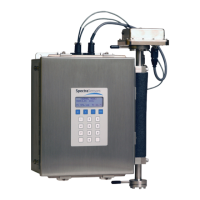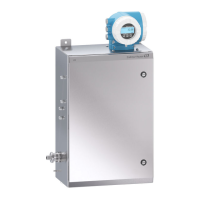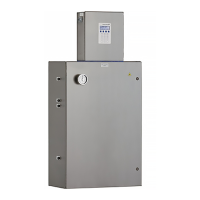Introduction
Hardware Installation and Maintenance Manual 1
–5
Due to their inherent structure, the molecules in the sample gas each have
characteristic natural frequencies (or resonances). When the output of the
laser is tuned to one of those natural frequencies, the molecules with that
particular resonance will absorb energy from the incident beam. That is, as the
beam of incident intensity, I
0
(), passes through the sample, attenuation occurs
via absorption by the measured gas with absorption cross section ().
According to the Beer-Lambert absorption law, the intensity remaining, I(), as
measured by the detector at the end of the beam path of length [
l] (cell length
x number of passes), is given by
-()ꞏnꞏl
(1)
where n represents the gas density. Thus, the ratio of the absorption measured
when the laser is tuned on-resonance versus off-resonance is directly
proportional to the number of molecules of that particular species in the beam
path, or
(2)
Figure 1–2 shows the typical raw data from a TDL absorption spectrometer
scan including the incident laser intensity, I
0
(), and the transmitted intensity,
I(), for a clean system and one with contaminated mirrors (shown to illustrate
the system’s relative insensitivity to mirror contamination). The positive slope
OPTICAL HEAD
DETECTOR
WINDOW
INLET
FAR MIRROR
TEC
LASER
OUTLET
PRESSURE
SENSOR
0.8 m Measurement Cell
Figure 1–1 Schematic of typical tunable diode laser
absorption spectrometer

